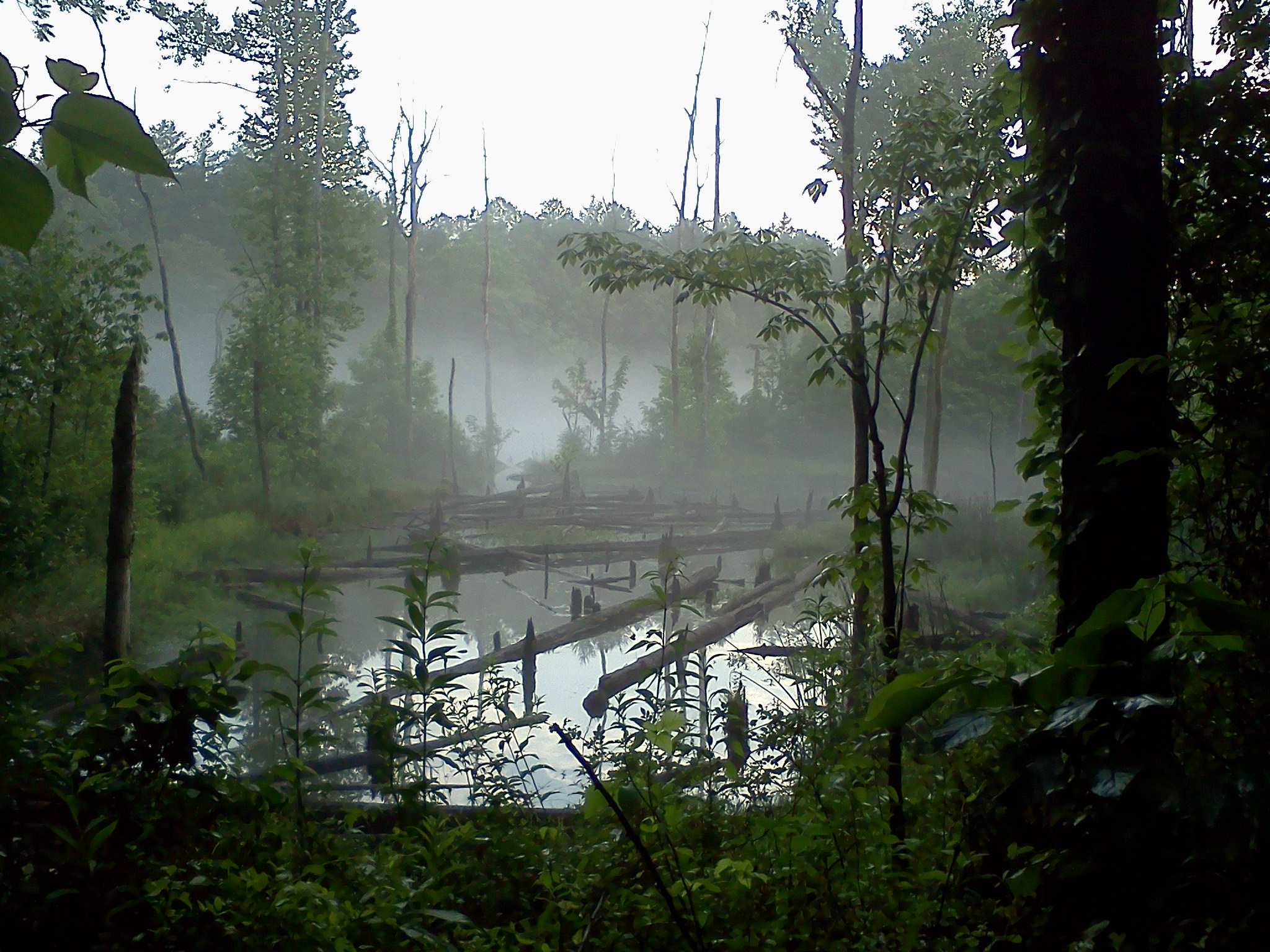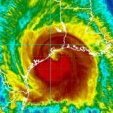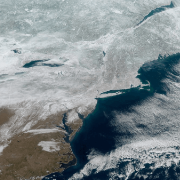-
Posts
4,715 -
Joined
-
Last visited
About Windspeed

Profile Information
-
Four Letter Airport Code For Weather Obs (Such as KDCA)
KTRI
-
Gender
Male
-
Location:
Tri-Cities, TN/VA
-
Interests
Geography, Climate and Geoarchaeology.
Recent Profile Visitors
-

Major Hurricane Melissa - 892mb - 185mph Jamaica landfall
Windspeed replied to GaWx's topic in Tropical Headquarters
They transmit data several times a second until they splash down to get a real-time measurement of the column they're falling through. In this particular case, the peak of the gust occurred at 657 ft, but the gust most likely continued through decent into splash-down being that low. I haven't read the entire data transfer, however. That being said, there is no bearing on height. It could have occurred even closer to splash down, given the high frequency of the data transfer. 657 ft is pretty close to the surface, though. Within 20 seconds to splash down at 10m/s.. -

Major Hurricane Melissa - 892mb - 185mph Jamaica landfall
Windspeed replied to GaWx's topic in Tropical Headquarters
NSF NCAR researchers have confirmed that the record-breaking wind gust of 219 kts (252 mph) recorded in Melissa was accurate after completing their analysis. https://news.ucar.edu/133047/record-breaking-winds-confirmed-hurricane-melissa -

Major Hurricane Melissa - 892mb - 185mph Jamaica landfall
Windspeed replied to GaWx's topic in Tropical Headquarters
Unfortunately, that's what you would expect to see from a higher-end Category 5. The footage is still insane, however. Thanks for sharing. RE: Deaths, I would be shocked if the toll remains below 100. There is just too far wide an area of immense devestation, especially through the interior of the island, and it takes time to search with cadaver dogs through all scattered piles of debris. -

Major Hurricane Melissa - 892mb - 185mph Jamaica landfall
Windspeed replied to GaWx's topic in Tropical Headquarters
Flooding did occur. I just do not have access to anything official yet. Based on images, there was clearly a strong storm surge in the right-front quadrant. Also, the eastern areas of the island did not go unscathed as there was flash flooding off the ridges. But so far, I have not read any official numbers yet on either. Hopefully, as Melissa gained forward speed while crossing the island, mudflows due to flooding were mitigated somewhat. If anyone has anything official, please share. -

2025 Atlantic Hurricane Season
Windspeed replied to BarryStantonGBP's topic in Tropical Headquarters
https://tropical.atmos.colostate.edu/Realtime/ CSU TC-RAMS matches NOAA's.. The other site seems off as 34.7 is corrrect. -

Major Hurricane Melissa - 892mb - 185mph Jamaica landfall
Windspeed replied to GaWx's topic in Tropical Headquarters
Yeah, unfortunately, it seems everything operationally is verifying on the ground. I am hopeful many lives were saved by residents heeding the advanced warnings. They had several days to plan. It will still be a miracle if the death count doesn't rise, however, despite the more densely populated areas in eastern Jamaica avoiding the eyewall. As you can see in the imagery, there are an overwhelming number of structures deroofed, walls down, or completely destroyed. -

Major Hurricane Melissa - 892mb - 185mph Jamaica landfall
Windspeed replied to GaWx's topic in Tropical Headquarters
I expected the imagery to be sombering for the southern coast. But the amount of destruction on Jamaica's NW coast, Montego Bay, etc., is pretty horrible. Clearly, Melissa's eyewall remained intense all the way across the island. -

Major Hurricane Melissa - 892mb - 185mph Jamaica landfall
Windspeed replied to GaWx's topic in Tropical Headquarters
The url on extwitter only showed the damage around those coordinates. Here's the main site you can use to zoom through what has been mapped so far. https://storms.ngs.noaa.gov/storms/melissa/index.html -

Major Hurricane Melissa - 892mb - 185mph Jamaica landfall
Windspeed replied to GaWx's topic in Tropical Headquarters
Melissa is still packing quite a punch while transitioning. -

Major Hurricane Melissa - 892mb - 185mph Jamaica landfall
Windspeed replied to GaWx's topic in Tropical Headquarters
It's probably the beginnings of being overtaken by the right front quadrant of the eyewall. Josh even stated it was before peak, and they were forced to bolt the doors, as it got much worse. I'd guess what you're seeing there is somewhere between 70 to 80 kts sustained with perhaps a much higher gust towards the end. Edit: Actually, those gusts towards the end may have actually been an increase in the sustained wind. So, again, guessing here, 70-80 kts sustained in the first bit there and then an increase to 100-110 kts towards the end. It's hard to be sure, and I am just going on visual cues from a lot of these videos over the years (which still means squat). -

Major Hurricane Melissa - 892mb - 185mph Jamaica landfall
Windspeed replied to GaWx's topic in Tropical Headquarters
Huge thanks to Brian McNoldy at the Rosenstiel School of Ocean and Atmospheric Science at Miami for editing the full loops together for which I sourced these. I am posting these for posterity. Rarely do we have radar loops that show full eyewall mergers instead of eyewall replacement cycles. I will post both the short range and long range. Keep in mind the short range has limited/degraded echoes due to distance. But you can still make out the moat and concentric outer band/eyewall that was organizing in Melissa prior to the inner eyewall becoming dominant and absorbing them. The only other intense hurricane that we have radar evidence of this phenomenon is Irma prior to its landfall in the Lesser Antilles. There is much to be learned about these type of events and how they occur. Most likely, when environmental conditons are near to perfect/pristine and an inner eyewall reaches a certain degree of stability, it will not succumb to outer concentric banding, but pull those bands in and absorb them. As we can see Melissa do in these loops, the dominant eyewall becomes extremely intense after the final merger before it goes on to become a sub 900 hPa hurricane. There is probably a doctorial degree for someone here. It just requires extensive research. Short range: Long range: -

Major Hurricane Melissa - 892mb - 185mph Jamaica landfall
Windspeed replied to GaWx's topic in Tropical Headquarters
Ok, hrmm... I might be getting some of his old footage mixed up. I think I'm confusing that with when Reynolds was chasing with him. -

Major Hurricane Melissa - 892mb - 185mph Jamaica landfall
Windspeed replied to GaWx's topic in Tropical Headquarters
I think what you are describing was when Super Typhoon Haiyan made landfall near Tacloban, Philippines. Come to think of it, that means Josh has been in the most intense Pacific landfall and the most intense Atlantic landfall in the satellite era. -

2025 Atlantic Hurricane Season
Windspeed replied to BarryStantonGBP's topic in Tropical Headquarters
We probably aren't done. A SW Caribbean system isn't uncommon for November. Also a few subtropical and even a purely tropical system over the central Atlantic. There are still regions of decent SSTs out there east of Bermuda and south of the Azores. Upper tropospheric temperatures are getting colder, and it doesn't take much beyond 26-27°C SSTs to drive instability with a TC reorganizing out of a cutoff trough. We see a decent system like that every other year in November. I do not forsee any more ACE machines like Melissa, however. -

Major Hurricane Melissa - 892mb - 185mph Jamaica landfall
Windspeed replied to GaWx's topic in Tropical Headquarters
I would expect the mountainous terrain of Eastern Cuba to rip up the low-level vorticity quite a bit here. Might not drop below hurricane intensity, but that combined with increasing shear, I doubt Melissa will be able to regain major status again prior to any impact on Bermuda.




.thumb.jpg.ad3a2e31d30aff035044689b311a0540.jpg)




